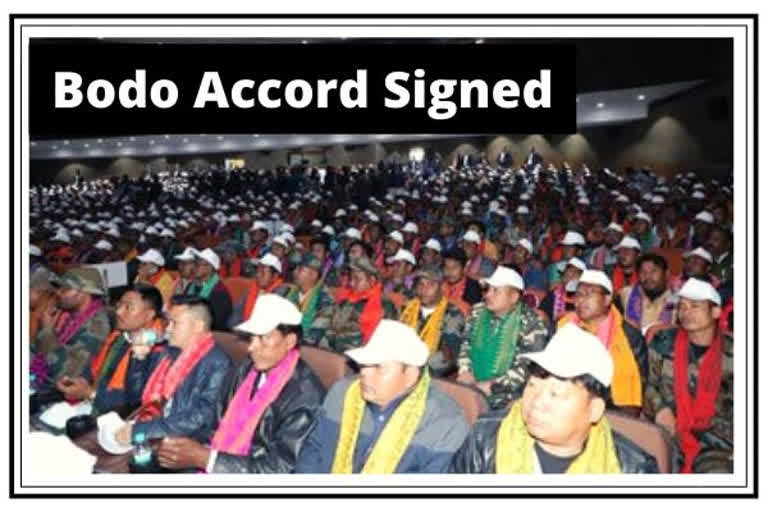New Delhi: It is now abundantly becoming clear that the modification of Article 370 in Jammu and Kashmir was just the beginning. And after Kashmir, the Narendra Modi-led government’s attention is now riveted on the Northeast region—traditionally termed ‘disturbed’ due to the activities of scores of insurgent outfits mainly hailing from Assam, Manipur, Meghalaya, Nagaland and Tripura with Mizoram’s brush with insurgency having ended decades ago.
The about three-decades-old armed movement by Bodo militants in western Assam was brought to an end on Monday (January 27, 2020) with the signing of the Memorandum of Settlement by three parties—the Union government, the Assam government and a group of Bodo leaders who between them represent nearly all shades of demands raised by the Bodos—from greater autonomy to separate statehood to complete independence.
On Thursday, more than 1,600 Bodo militants laid down their weapons in a surrender ceremony in Guwahati.
ALSO READ:Bodo Accord will strengthen Centre, weaken Assam
With the ongoing negotiations with the Naga rebels, ongoing since 1997, and with the United Liberation Front of Assam (ULFA) insurgents since 2005 nearing completion, it is very likely that the government will ink pacts with these two major groups in some time soon.
Both the NSCN and the ULFA leaderships say their respective negotiations with the government have ended, and the ball is in the government’s court.
In reality, neither the NSCN nor the ULFA has any choice as they have been beaten fair and square by the government’s negotiating team that has used all diplomatic and negotiating skills to push their opponents into a corner.
Moreover, by coming to the negotiating table, the insurgents know that they have crossed the Rubicon and there would be no going back to their jungle bases to carry on with the insurgency movement. The insurgents, therefore, have to accept whatever they have been offered or face redundancy in the current scheme of things.
